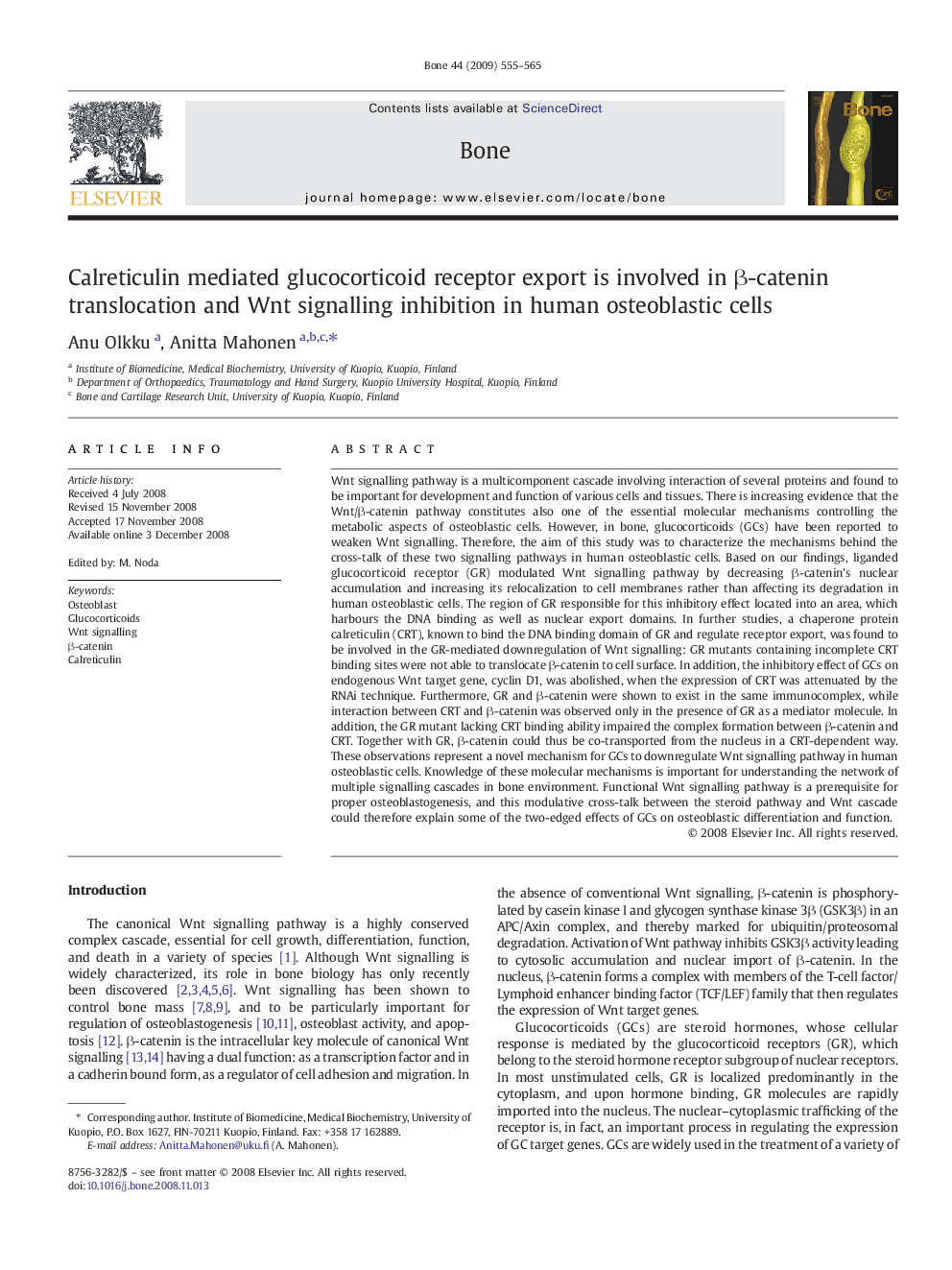| کد مقاله | کد نشریه | سال انتشار | مقاله انگلیسی | نسخه تمام متن |
|---|---|---|---|---|
| 5892603 | 1153329 | 2009 | 11 صفحه PDF | دانلود رایگان |
عنوان انگلیسی مقاله ISI
Calreticulin mediated glucocorticoid receptor export is involved in β-catenin translocation and Wnt signalling inhibition in human osteoblastic cells
دانلود مقاله + سفارش ترجمه
دانلود مقاله ISI انگلیسی
رایگان برای ایرانیان
کلمات کلیدی
موضوعات مرتبط
علوم زیستی و بیوفناوری
بیوشیمی، ژنتیک و زیست شناسی مولکولی
زیست شناسی تکاملی
پیش نمایش صفحه اول مقاله

چکیده انگلیسی
Wnt signalling pathway is a multicomponent cascade involving interaction of several proteins and found to be important for development and function of various cells and tissues. There is increasing evidence that the Wnt/β-catenin pathway constitutes also one of the essential molecular mechanisms controlling the metabolic aspects of osteoblastic cells. However, in bone, glucocorticoids (GCs) have been reported to weaken Wnt signalling. Therefore, the aim of this study was to characterize the mechanisms behind the cross-talk of these two signalling pathways in human osteoblastic cells. Based on our findings, liganded glucocorticoid receptor (GR) modulated Wnt signalling pathway by decreasing β-catenin's nuclear accumulation and increasing its relocalization to cell membranes rather than affecting its degradation in human osteoblastic cells. The region of GR responsible for this inhibitory effect located into an area, which harbours the DNA binding as well as nuclear export domains. In further studies, a chaperone protein calreticulin (CRT), known to bind the DNA binding domain of GR and regulate receptor export, was found to be involved in the GR-mediated downregulation of Wnt signalling: GR mutants containing incomplete CRT binding sites were not able to translocate β-catenin to cell surface. In addition, the inhibitory effect of GCs on endogenous Wnt target gene, cyclin D1, was abolished, when the expression of CRT was attenuated by the RNAi technique. Furthermore, GR and β-catenin were shown to exist in the same immunocomplex, while interaction between CRT and β-catenin was observed only in the presence of GR as a mediator molecule. In addition, the GR mutant lacking CRT binding ability impaired the complex formation between β-catenin and CRT. Together with GR, β-catenin could thus be co-transported from the nucleus in a CRT-dependent way. These observations represent a novel mechanism for GCs to downregulate Wnt signalling pathway in human osteoblastic cells. Knowledge of these molecular mechanisms is important for understanding the network of multiple signalling cascades in bone environment. Functional Wnt signalling pathway is a prerequisite for proper osteoblastogenesis, and this modulative cross-talk between the steroid pathway and Wnt cascade could therefore explain some of the two-edged effects of GCs on osteoblastic differentiation and function.
ناشر
Database: Elsevier - ScienceDirect (ساینس دایرکت)
Journal: Bone - Volume 44, Issue 4, April 2009, Pages 555-565
Journal: Bone - Volume 44, Issue 4, April 2009, Pages 555-565
نویسندگان
Anu Olkku, Anitta Mahonen,